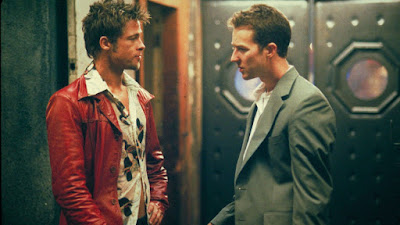Coraline (2009)
I remember watching Coraline for the first time when I was about 9 years old, and it left me with such an eerie feeling and gave me nightmares about the Other Mother. The entire film evokes creepy feelings, and explores themes of the doppelganger and Freud’s concept of the uncanny. As Coraline Jones, bored with her dull life, crawls through a bricked-up wall in her house, she emerges in another world that is an uncanny double of her own, minus all the bad parts (or so it seems). Her grumpy and somewhat negligent parents have been replaced with attentive, doting versions of themselves eager to satisfy her every desire, and the Jones’ eccentric neighbors have been replaced with younger, friendlier versions of themselves who put on fabulous shows for Coraline and her friend Wybie each night. The only difference is that the characters in Coraline’s other world all have flat, glossy black buttons instead of eyes. Coraline seems willing to overlook this small detail; that is, until her Other Mother starts demanding that Coraline sew on button eyes of her own. Freud’s “The Uncanny” is referenced in several different ways throughout the film. The first and most obvious is that Coraline’s world is entirely the same, except everyone is a better version of themselves. Thus, the familiar becomes unfamiliar, evoking uncanny feelings. Secondly, the motif of eyes and buttons is a very direct reference to Freud’s essay. In Freud’s essay he commits a large section to the relation between the uncanny and fears of losing one’s eyes, combining the two as a repressed recurrence of the childhood castration complex; that earliest of fears that our development may be so brutally arrested. Not to mention, the Other Mother is absolutely terrifying.



Comments
Post a Comment